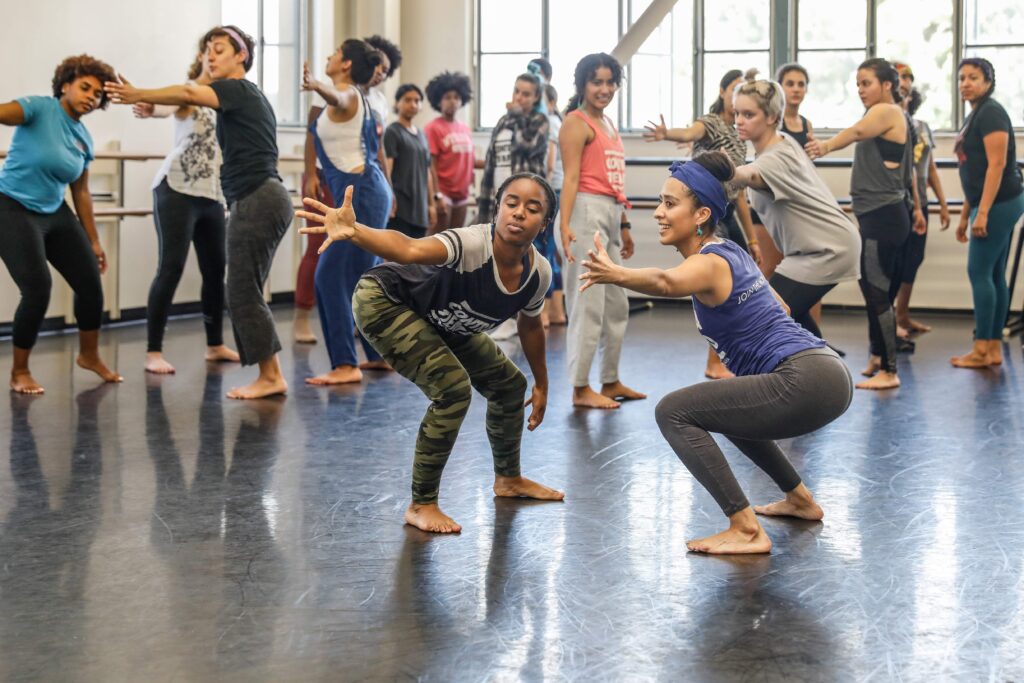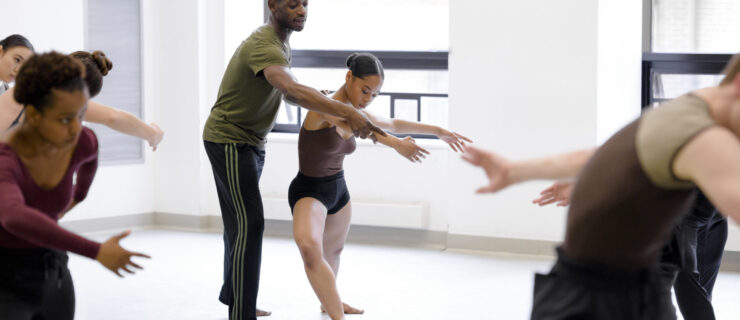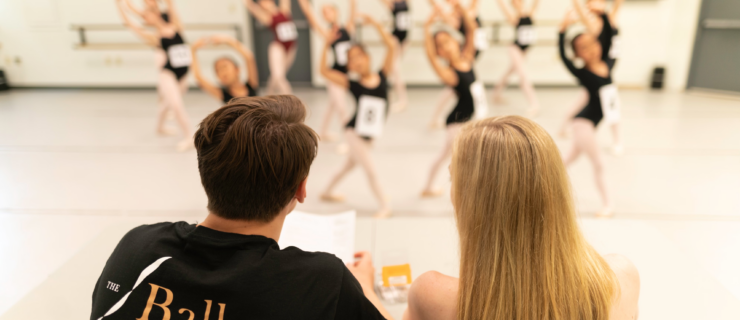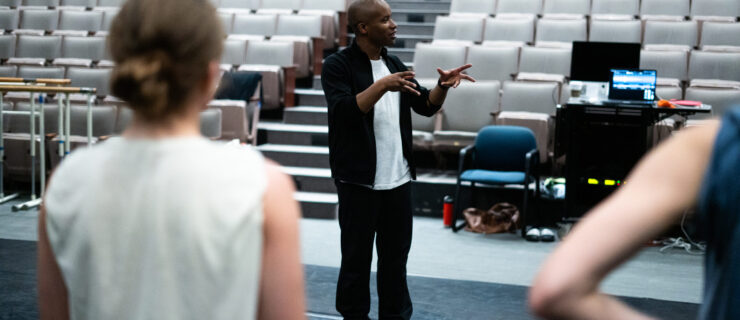CONTRA-TIEMPO’s Futuro Summer Dance Intensive Prepares Future Changemakers
As the daughter of two labor union organizers, being an advocate for social change is in Ana María Alvarez’s blood. “I have been very clear pretty much my whole life that dance isn’t just something I do, but something that has the capacity to move the world and be transformational,” describes the Cuban American dancer and founding artistic director of CONTRA-TIEMPO in Los Angeles.
After receiving her degrees in dance and politics from Oberlin College, Alvarez began working at the Center for Family Life in Sunset Park, Brooklyn, in their Life Lines Community Arts Project. “I think that work really solidified the power of dance for me and what it can do,” says Alvarez, who is also a tenured faculty member in the Dance Department at the University of California, San Diego. Now CONTRA-TIEMPO is inspiring the next generation of “artivists” through its Futuro Summer Dance Intensive in Los Angeles, running from August 12–21 (registration ends July 22).
Under the theme “None of us are free until all of us are free,” Futuro will hold technique classes in salsa, hip hop, house, Afro-Cuban, and more. The program will also dive deeper into these ancestral movement practices, their histories, and CONTRA-TIEMPO’s “art as social action” methodology. Acclaimed poet Amanda Gorman is a notable alum of the Futuro Summer Dance Intensive.
We chatted with Alvarez about what participants can gain from Futuro.
Who is Futuro for and what distinguishes it from other dance intensives out there?
We describe it as a 10-day transformational experience for anyone interested in both dance as a physical practice and making social change with their work. Artists who are committed to seeing the world be a different place than it currently is. As a company, CONTRA-TIEMPO is deeply integrated with community, dance education, and the concert stage; those things are all deeply in conversation with each other, and the Futuro program really reflects that. We dedicate a part of each day to what we call “art as social action,” thinking about the micro and the macro; yourself as the beginning point of your activist work, and when that embodiment of self is solid, it allows you to contribute to the world.

Artists really come to us [from all walks of life]. We have high school and college students, graduates, professional dancers, and those working in other industries like community organizing, city work, and nonprofits. It’s not just focused on how to be a dance practitioner, but how can you actually be a whole human being as an artist and how can we collectively build this idea that art has the capacity to transform the world as we know it.
What’s the level of training and experience needed in order to participate in Futuro’s technique classes?
The beauty of the program is that we run two tracks simultaneously. We usually have about 45 to 50 participants each year. There are some classes we do collectively, like the rueda de casino, a Cuban style of salsa that is done in a circle and has partner-changing. But then we split up for a lot of the other technique classes, [which are divided] into professional and beginner tracks. Each day, we display what classes are being taught, and you can choose what track you would like to do. You can bounce back and forth based on your own desire and how hard you want to push yourself.
Can you talk more about the ancestral movement practices and art-as-social-action methodology?
Our framework in teaching dance is thinking of these as “ancestral technologies,” as I like to call them. When you think of technology, it is something that was created by human beings to solve problems. When I think about dance, music, and art, I think about the ways these were designed by human beings to make sense of the world, overcome obstacles, and find deep connections and meaning in our lives. These ancestral technologies are all the things we teach—salsa, Afro-Cuban, hip hop. We also teach somatic movement practices to deepen into the body as a physical practice, looking at the body as a location of social change and activating meaning.
“Art as social action” has various different approaches—there is Augusto Boal’s Theater of the Oppressed and the Theatre of the Sphere, by Luis Valdez. These are lineages we share in the program. We are teaching about intersectionality and liberation frameworks as a way for people to have a deeper understanding of the tools they already have and the practices they can gain to build a more liberated future for all of us.

There is also a Future Artivist Leadership Intensive that runs in parallel to Futuro. What can dance educators gain from that program?
The Artivist Leadership Institute is not a program that we have run since COVID, but it is something that we’re looking forward to trying to restart. It focuses more on the activist part of what we do, almost taking the art-as-social-action aspect of Futuro’s curriculum and really having a deepening two-to-three-day experience around that. The way we’re thinking about it is a training ground for people who [want to] engage in these themes in their classrooms. With that said, right now the Futuro Summer Dance Intensive is still the best place to do that even if you are an educator or someone who is working with youth. Futuro will give you the full experience in addition to physical practice. I’m hoping in 2025 we can bring back the [redesigned] Artivist Leadership Institute.
What is the Sponsor a Student initiative?
Futuro oftentimes has grant funding, but this year we do not have a full sponsor the way that we have in the past. Usually around 75 percent of our students are on some kind of scholarship. So we are asking our community and anyone who believes in this work to go on our website. You can sponsor an individual student ($1,000) [or donate another amount]. Currently, all the donations on our website are going towards scholarships for Futuro.




